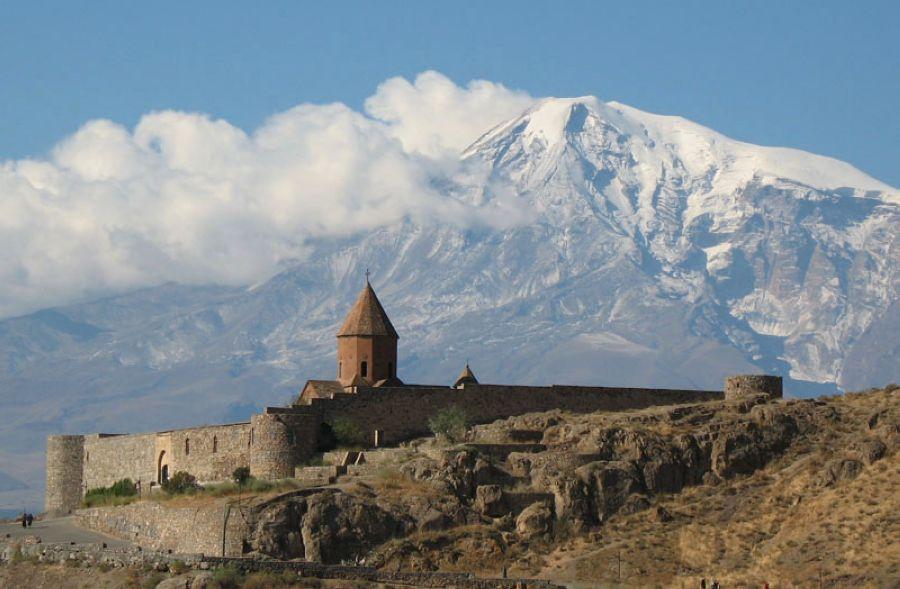Ararat Ler Masin Texekutyun

0601-0823 AM02 (2017) 0.728 high Website Ararat (:, Armenian pronunciation: ( )), is a ( ) of. Its capital and largest city is the town of. The province is named after the biblical. It is bordered by from the west and 's from the south. It surrounds the of Nakhichevan which has been controlled by Armenia since its capture in May 1992 during the. Domestically, Ararat is bordered by from the northwest, from the north, from the east, from the southeast and the city of from the north. Two former capitals of Armenia are located in the modern-day Ararat Province,.
It is also home to the monastery, significant as the place of 's 13-year imprisonment and the closest point to within Armenian borders. Spitakasar mountain (3560 m.) The province is located at the southeast of the, surrounded by the Yeranos mountains from the north, the mountains of, Dahnak and Mzhkatar from the east, Urts mountains from the south and the from the west. The mountains of Yerakh are located at the centre of the province. Approximately, 30% of the territory is plain, while the rest is dominated by mountains. The highest point of Ararat province is the Spitakasar peak of Gegham mountains with a height of 3560 meters. The lowest point is 801 meters at the Araks valley.
Arai Ler; Mount Ararat. From north to south and east to west, Armenia is simply bound by chains of mountains. The Sevan Mountains are the oldest standing in Armenia, weighing in at 380-1,200 million years old. Volcanoes and massive earthquakes formed the base of the mountainous region, carving mountains, valleys and plateaus on a land that now.
 Araks,, and Vedi, are the 4 major rivers the flow through the province. The climate within the territory of the province is highly diversified.
Araks,, and Vedi, are the 4 major rivers the flow through the province. The climate within the territory of the province is highly diversified.
It ranges between extremely arid climate at the lower plains and cold snowy climate at the heights. The cliffy terrain of located at the northeast of the province, used to be the stronghold of the in Armenia. Between October 2000 to July 2002 tracks of no more than 10 individuals were found in an area of 780 km 2 (300 sq mi). Drawing of the central square of the ancient Armenian capital city of. The main cathedral of St.
Grigor (3rd-5th century), with a small church of St. Sarkis to the right (6th century), and the residence of the Catholicos on the left (5th century) The region of modern-day Ararat Province is among the earliest locations that was settled by the people of the. It mainly includes the 3 cantons of Vostan Hayots, Urstadzor and Arats of the historic province. Vostan Hayots was known since the establishment of the at the beginning of the 2nd century BC. The ancient Armenian capitals of founded in 176 BC, and founded during the 4th century AD, were both located within the Vostan Hayots canton. The other cantons of Urtsadzor and Arats were first mentioned in the 5th century AD by the historian in his 'History of Vardan and the Armenian War' historical work.
After the fall of the Armenian Kingdom in 428, the region became part of the of Persia until the in the mid-7th century. According to the 8th-century historian Ghevond, the Armenian princes of Urtsadzor canton participated in the failed revolution of 775 in against the rulers of. The in Argavand, 1413 At the end of the 9th century, the 3 cantons became part of the newly established. However, between the 11th and 15th centuries, the region suffered from the Seljuk, Mongol, and invasions, respectively. At the beginning of the 16th century, the territory of modern-day Ararat became part of the Erivan Beglarbegi within the. During the first half of the 18th century, the territory became part of the under the rule of the and later under the of Persia.
It remained under the Persian rule until 1827-1828, when Eastern Armenia was ceded by the as a result of the and the signing of the. With the fall of the Russian Empire and as a result of the decisive Armenian victories over the Turks in the battles of,, and, the region became part of the in May 1918. After 2 years of brief independence, Armenia became part of the in December 1920.
